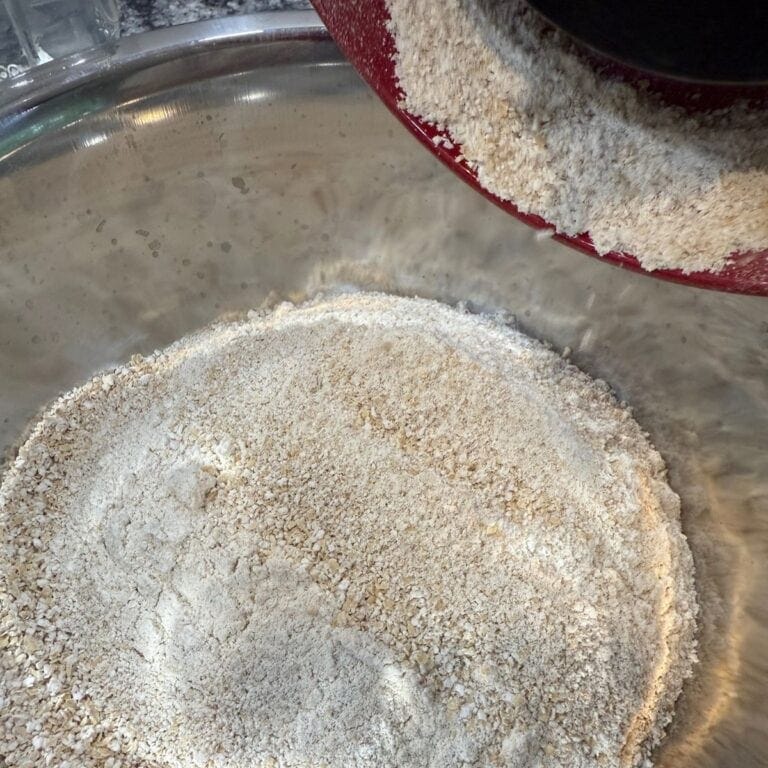Which Grain Mill Should I Get?
Choosing a grain mill to fit your needs shouldn’t be rocket science. This post should help you answer the question Which Grain Mill Should I Get?
There’s something truly special about baking with freshly milled flour—the rich aroma, the full flavor, and the incredible nutrition that comes from using whole grains straight from the mill.
Freshly milled flour brings your baking to a whole new level, helping you create breads, muffins, and other baked goods that are not only delicious but also nourishing for your family.
If you’re ready to take the plunge into milling your own grains at home, one of the first and most important decisions you’ll face is choosing the right grain mill.
With so many options on the market—manual or electric, burr or impact—it can feel overwhelming to know which mill will fit your baking style, budget, and kitchen space.
In this post, we’ll break down the different types of grain mills, key factors to consider, and some popular models that home bakers love.
Whether you’re just starting out or looking to upgrade, this guide will help you find the perfect grain mill to bring the freshest flour to your kitchen and nourish your family with every loaf.
Types of Grain Mills
When it comes to choosing a grain mill, understanding the different types is a great place to start. Each style has its own way of working, along with unique benefits and drawbacks. Here’s a quick breakdown to help you get familiar:
| Type of Mill | How It Works | Pros | Cons |
|---|---|---|---|
| Manual Grain Mills | You turn a hand crank to grind the grains. | Affordable, quiet, no electricity needed—great for small batches or off-grid baking. | Labor-intensive and slower; not ideal for large quantities. |
| Electric Grain Mills | Powered by electricity, these mills grind grains quickly with minimal effort on your part. | Fast, effortless, consistent results—perfect for busy bakers or large batches. | More expensive, requires power outlet, and can be noisy. |
| Impact Mills | Use high-speed rotating blades to crush grains into flour. | Produce very fine flour quickly; great for soft grains and baking delicate goods. | Generates more heat which can affect nutrient retention; sometimes less durable. |
| Burr Mills | Use two abrasive surfaces (burrs) to slowly crush grains. | Slower milling preserves nutrients and flavor; produces coarser, textured flour ideal for hearty breads. | Takes longer to mill; usually more expensive upfront. |
Manual mills are fantastic if you enjoy a hands-on approach (but you’ll definitely get a workout in!) and want something simple. Electric mills save time and energy, especially if you bake often or in larger batches.
There are several factors to consider when choosing a grain mill like the following:
Factors to Consider When Choosing a Grain Mill
- Types of Grains Supported: wheat, spelt, rye, corn, legumes, etc.
- Budget: price ranges and what to expect at different levels.
- Capacity and Speed: how much flour you need and how fast you want it.
- Flour Texture and Versatility: ability to adjust grind settings for different textures (fine to coarse).
- Durability and Build Quality: materials, warranty, and longevity.
- Ease of Cleaning and Maintenance.
- Size and Storage: counter space and portability.
- Noise Level: important for home use.
Top 3 Grain Mill Brands
Grain Mills I Own
The very first grain mill I invested in was a kitchen aid grain mill attachment. I was so excited and got my first taste of milling wheat berries, experimenting with different textures and flavors, but I realized that I was wearing out my kitchen aid mixer!
I ended up not baking with freshly milled grains because it took me so long to mill it – 10 minutes of milling, 30 minutes of rest, 10 minutes of milling, 30 minutes of rest. It ended up taking 2-3 hours to mill just a couple of cups of flour for one recipes! So – please note – I do NOT recommend the kitchen aid attachment!

While I got to experiment with all things Freshly Milled, I ended up wasting my money on something that doesn’t work as well or last very long. I, then invested in a manual grain mill. Which allows me to mill grains whenever I want without the use of electricity! I love it, but it is a full upper-arm workout! I have a new appreciation of the term “the daily grind“.
If you don’t want to workout every time you mill your grains then I don’t necessarily recommend that either. At this time, I am eyeballing the Mockmill 200 as my next grain mill purchase, but will have to wait because it is a big investment.

**UPDATE** I invested in my new Mockmill! The main reason being that I tightened my manual grain mill for a finer flour and the arm workout turned into an extreme chore. I found I started baking less because I didn’t want to work so hard to get my flour – which I know sounds bad, but it was incredibly hard work.
I’m thankful for my new mill and am ready to crank out some new recipes!! Stay tuned for all the yumminess coming your way!




